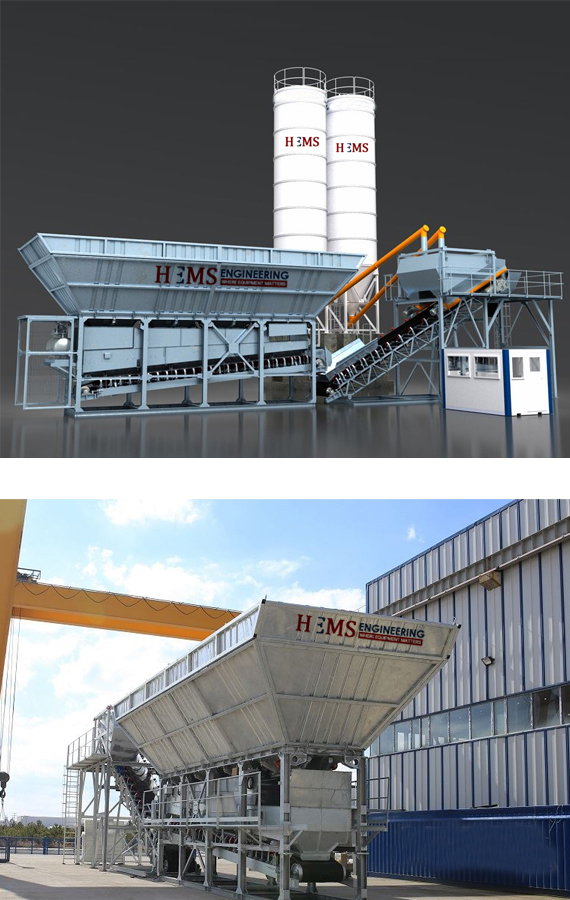Dry concrete batching plants, also known as dry mix concrete batching plants, have sand, gravel, and cement feeding to batching plant that pass the numerical or manual scale. Then all the raw materials are discharged into a chute into the truck. At the same time, the water is weighed, or volume metered and discharged into the mixer truck through the same charging tank. At last, all the material mixed and transported to the site.
Wet concrete batch plant uses a concrete mixer with mixing all of the above-mentioned components (including water) in a central location, the concrete is stirring on the way to the site to prevent the setting (using agitors or pre-mixed cars).
Like a mobile concrete plant and a stationary concrete plant, the dry concrete plant consists of cement silos, feeding system, control system, weighing system and mixing system. Cement silos are the catching and supply of raw materials such as cement, sand and fly ash as production necessitates. The feed system is a bridge to connect the aggregates and the mixing system. The accuracy of the weighing system determines the amount of mixed materials, and therefore has a great influence on the quality of the mixed concrete. The mixing system only mixes the materials without water. As a result, the mixer truck is important for transporting and mixing concrete. The control system is the core of the whole plant. Workers can reach full automation by using concrete equipment in the control room.
Dry mixing differs from wet mixing equipment. A wet mix containing a central concrete mixer while dry mix can provide a more consistent mixture in a shorter period of time. Dry batching plant will usually see more variations in standard deviation of breaking strength and changes from load to load, because while mixing cement, stone and other mixture can be mixed systematic than the wet type mixing. Some concrete batching plants combine dry and wet mix characteristics to increase the application.
- Deals In : Spares and Accessories for all types of Construction Machineries and Mining Equipment
-
Mfg. Concrete Batching Plants, WMM, HMP & CTSB Plants
- +91-63991 63999
- info@hemsengineering.com

